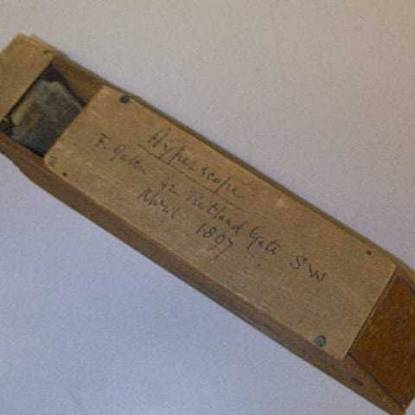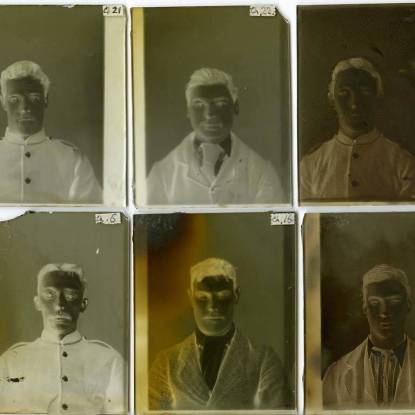Galton and anthropometrics
This eye colour sample chart is one of a collection of measuring devices used (and often invented) by Galton at the former Anthropometric, later Galton Laboratory.
Galton’s main area of interest was heredity. He coined the term ‘eugenics’ to describe the science and idea of breeding human ‘stock’ to give ‘the more suitable races or strains of blood a better chance of prevailing speedily over the less suitable’. His studies in heredity also led to his interest in anthropometrics — the measurement of human features which Galton considered indicators of human ability and behaviour.
To gain enough data to make statistically valid conclusions, Galton established the Anthropometric Laboratory at the London International Health Exhibition of 1885. Over 9,000 visitors paid a small fee to be measured and for a copy of their data.
Some of the measuring devices from the Galton Laboratory are now part of the collection, including head spanners, craniometers, hair and eye colour reference samples, and a hand dynamometer. The collection also contains an example of Galton’s Whistle (i.e. the dog whistle) which he invented to measure the hearing abilities of different animals.

The success of the Galton Laboratory led to its incorporation into UCL in 1904 and in 1996 it became part of the UCL Department of Biology.
 Close
Close




